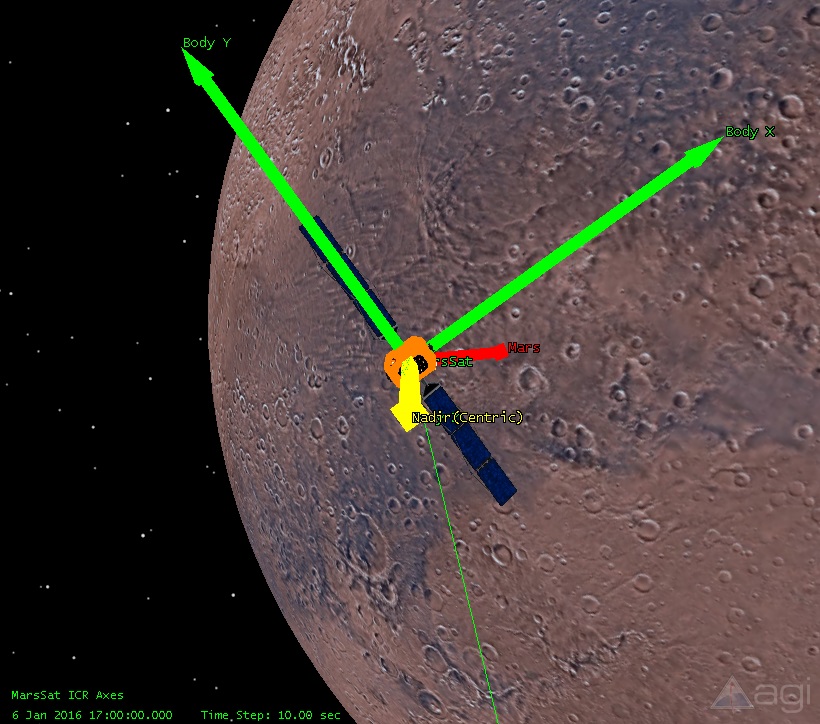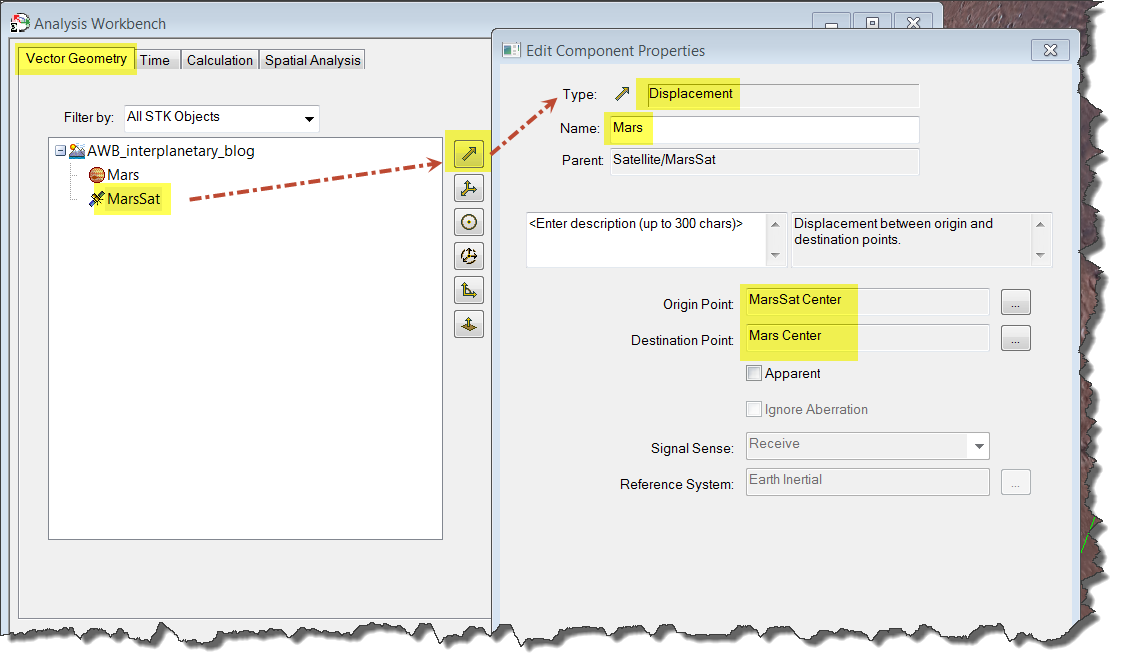In STK, some of the built-in attitude profiles for a spacecraft are specific to the central body that is set as the reference for the satellite ephemeris. This can cause complications in interplanetary missions where your satellite may be traveling to two or more planets or moons. You can use alternative attitude profiles along with custom vectors and axes created in STK's
Analysis Workbench capability to solve this problem.
For example, nadir-aligned attitude profiles align the body Z axis of the spacecraft with the nadir vector and align the body X axis of the spacecraft based on the constraint type (ECI velocity, ECF velocity, or orbit normal). These profiles will only work for the reference central body, but not at other bodies. For example, when you set a satellite near Mars to be nadir-aligned with ECI velocity constraint, the body Z axis will still point toward Earth, and the body X axis will align with the spacecraft velocity in the Earth inertial frame if Earth is set as the ephemeris reference.

Create an attitude profile for a spacecraft that works with other central bodies
To create an attitude profile for a spacecraft that works with other central bodies, use alternative attitude profiles along with custom vectors and axes created in
Analysis Workbench. The example below outlines the steps to do this.
- Using the Mars example above, create a Mars nadir vector as follows:
- Open Analysis Workbench to create a vector from the satellite to Mars.
- In the Vector Geometry tab, select your satellite and create a new vector with the following properties:
|
Option
|
Value
|
|---|
|
Type
|
Displacement
|
|
Name
|
Mars
|
|
Origin Point
|
Satellite center
|
|
Destination Point
|
Mars center
|

2. In lieu of using one of the built-in nadir profiles, use the aligned and constrained profile, as shown below:
Now, the spacecraft is nadir aligned with the velocity constraint, but for Mars:
